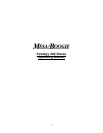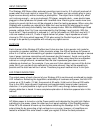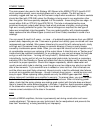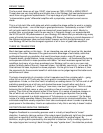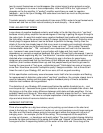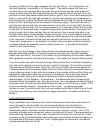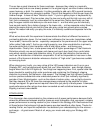
tend to cancel themselves out and disappear (the original signal is also reduced so extra
"gain" is designed in to more or less compensate). How much NFB is the "right amount"? It
depends on the the amplifier. A "perfect" amplifier would have no need for negative
feedback... and in-fact your Strategy 400 uses about one-fourth as much as the previous
best tube designs.
Transistor amps by contrast, use hundreds of times more NFB in order to force themselves to
behave well and iron out their natural tendency to work abruptly -- like a switch.
TIME LAG AND TEST SPECS
Large doses of negative feedback certainly work better in the lab than they do in "real time"
because virtually every amplifier has some degree of time-lag in getting the signal through to
the output jack. An amp that needs heavy negative feedback has trouble with music because
the time delay causes the corrective remedy to always lag behind the music. Distortion must
literally begin to appear before it can be fed back to perform its therapy. And by then the
attack of the note has already begun! And since music is complex and constantly changing,
a lot of what you hear can be the amp trying to "clean up its act". This is called "transient
intermodulation distortion" - TIM - and wasn't even discovered until well into the transistor
era... because it was never known to occur before with tubes and their much lower
dependency on corrective negative feedback. But when TIM was finally discovered, it went a
long way toward explaining why the "low distortion" transistor amplifiers sounded harsh and
distorted when compared to tube units. TIM was truly egg-in-the-face for some heavy
designers who proclaimed that the harshness of their designs was actually the absence of
distortion (their numbers backed them up) and that people would just have to get used to
hearing the new sound of "truly pure, undistorted music!" Solid-state has come a long way
since then. Now there are some "audiophile quality" designs available - but at three to ten
times the cost of your Strategy 400, and to our ears, still not as good sounding.
All this specification controversy occurs because music itself is far too complex and fleeting
for measurement of distortion under actual "real time" conditions. So a simple, steady tone is
used for laboratory testing and that gives negative feedback plenty of time to act before
distortion test numbers can be generated.
The distortion of your Strategy 400 remains well below the audible threshold up to -- and
even beyond clip -- because some types of distortion are far less noticeable than others. And
this brings us to the other major difference between solid-state and tube amplifiers. You've
probably heard such things as "tube amps clip soft, transistor amps clip hard" or "even-order
distortion vs odd order"... So here is a simple explanation of what happens when an amp
clips and what kinds of harmonic distortion result.
HARMONIC DISTORTION
Think of an amplifier as a big lever where you're pushing up and down on the short end,
close to the fulcrum. A small amount of motion on your end produces a much larger swing on
the other end. But there's always going to be some point where the large end runs out of
swinging room - for example: you've hit the ceiling. This corresponds to the amplifier's
running out of power -- or headroom as its aptly called. The result is called clipping distortion
because the tops and bottoms of the swing are limited and "clipped" off because they should
have gone further if responding faithfully to the action of the short end. So as long as the
6



